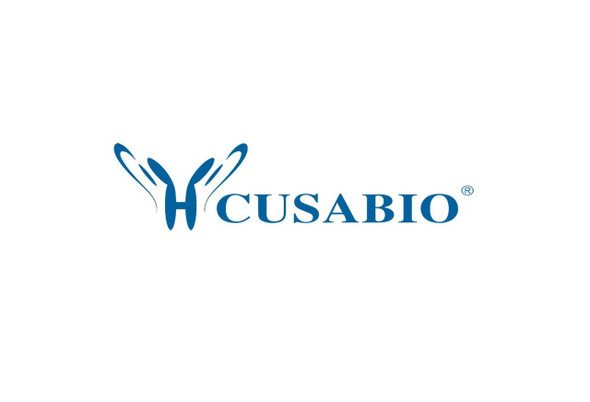Cusabio Human Recombinants
Recombinant Human Serine/threonine-protein kinase STK11 (STK11) | CSB-EP624036HU
- SKU:
- CSB-EP624036HU
- Availability:
- 3 - 7 Working Days
Description
Recombinant Human Serine/threonine-protein kinase STK11 (STK11) | CSB-EP624036HU | Cusabio
Alternative Name(s): Liver kinase B1 ;LKB1 ;hLKB1Renal carcinoma antigen NY-REN-19
Gene Names: STK11
Research Areas: Apoptosis
Organism: Homo sapiens (Human)
AA Sequence: MEVVDPQQLGMFTEGELMSVGMDTFIHRIDSTEVIYQPRRKRAKLIGKYLMGDLLGEGSYGKVKEVLDSETLCRRAVKILKKKKLRRIPNGEANVKKEIQLLRRLRHKNVIQLVDVLYNEEKQKMYMVMEYCVCGMQEMLDSVPEKRFPVCQAHGYFCQLIDGLEYLHSQGIVHKDIKPGNLLLTTGGTLKISDLGVAEALHPFAADDTCRTSQGSPAFQPPEIANGLDTFSGFKVDIWSAGVTLYNITTGLYPFEGDNIYKLFENIGKGSYAIPGDCGPPLSDLLKGMLEYEPAKRFSIRQIRQHSWFRKKHPPAEAPVPIPPSPDTKDRWRSMTVVPYLEDLHGADEDEDLFDIEDDIIYTQDFTVPGQVPEEEASHNGQRRGLPKAVCMNGTEAAQLSTKSRAEGRAPNPARKACSASSKIRRLSAC
Source: E.coli
Tag Info: N-terminal 6xHis-SUMO-tagged
Expression Region: 1-430aa
Sequence Info: Full Length of Mature Protein
MW: 64.3 kDa
Purity: Greater than 90% as determined by SDS-PAGE.
Relevance: Tumor suppressor serine/threonine-protein kinase that controls the activity of AMP-activated protein kinase (AMPK) family mbers, thereby playing a role in various processes such as cell metabolism, cell polarity, apoptosis and DNA damage response. Acts by phosphorylating the T-loop of AMPK family proteins, thus promoting their activity: phosphorylates PRKAA1, PRKAA2, BRSK1, BRSK2, MARK1, MARK2, MARK3, MARK4, NUAK1, NUAK2, SIK1, SIK2, SIK3 and SNRK but not MELK. Also phosphorylates non-AMPK family proteins such as STRADA, PTEN and possibly p53/TP53. Acts as a key upstream regulator of AMPK by mediating phosphorylation and activation of AMPK catalytic subunits PRKAA1 and PRKAA2 and thereby regulates processes including: inhibition of signaling pathways that promote cell growth and proliferation when energy levels are low, glucose homeostasis in liver, activation of autophagy when cells undergo nutrient deprivation, and B-cell differentiation in the germinal center in response to DNA damage. Also acts as a regulator of cellular polarity by rodeling the actin cytoskeleton. Required for cortical neuron polarization by mediating phosphorylation and activation of BRSK1 and BRSK2, leading to axon initiation and specification. Involved in DNA damage response: interacts with p53/TP53 and recruited to the CDKN1A/WAF1 promoter to participate in transcription activation. Able to phosphorylate p53/TP53; the relevance of such result in vivo is however unclear and phosphorylation may be indirect and mediated by downstream STK11/LKB1 kinase NUAK1. Also acts as a mediator of p53/TP53-dependent apoptosis via interaction with p53/TP53: translocates to the mitochondrion during apoptosis and regulates p53/TP53-dependent apoptosis pathways. In vein endothelial cells, inhibits PI3K/Akt signaling activity and thus induces apoptosis in response to the oxidant peroxynitrite (in vitro). Regulates UV radiation-induced DNA damage response mediated by CDKN1A. In association with NUAK1, phosphorylates CDKN1A in response to UV radiation and contributes to its degradation which is necessary for optimal DNA repair
Reference: Peutz-Jeghers syndrome is caused by mutations in a novel serine threonine kinase.Jenne D.E., Reimann H., Nezu J., Friedl W., Loff S., Jeschke R., Mueller O., Back W., Zimmer M.Nat. Genet. 18:38-43(1998)
Storage: The shelf life is related to many factors, storage state, buffer ingredients, storage temperature and the stability of the protein itself. Generally, the shelf life of liquid form is 6 months at -20?/-80?. The shelf life of lyophilized form is 12 months at -20?/-80?.
Notes: Repeated freezing and thawing is not recommended. Store working aliquots at 4? for up to one week.
Function: Tumor suppressor serine/threonine-protein kinase that controls the activity of AMP-activated protein kinase (AMPK) family members, thereby playing a role in various processes such as cell metabolism, cell polarity, apoptosis and DNA damage response. Acts by phosphorylating the T-loop of AMPK family proteins, thus promoting their activity
Involvement in disease: Peutz-Jeghers syndrome (PJS); Testicular germ cell tumor (TGCT)
Subcellular Location: Nucleus, Cytoplasm, Membrane, Mitochondrion, Note=A small fraction localizes at membranes (By similarity), Relocates to the cytoplasm when bound to STRAD (STRADA or STRADB) and CAB39/MO25 (CAB39/MO25alpha or CAB39L/MO25beta), Translocates to the mitochondrion during apoptosis, Translocates to the cytoplasm in response to metformin or peroxynitrite treatment, PTEN promotes cytoplasmic localization, SUBCELLULAR LOCATION: Isoform 2: Nucleus, Cytoplasm
Protein Families: Protein kinase superfamily, CAMK Ser/Thr protein kinase family, LKB1 subfamily
Tissue Specificity: Ubiquitously expressed. Strongest expression in testis and fetal liver.
Paythway: mTORsignalingpathway
Form: Liquid or Lyophilized powder
Buffer: If the delivery form is liquid, the default storage buffer is Tris/PBS-based buffer, 5%-50% glycerol. If the delivery form is lyophilized powder, the buffer before lyophilization is Tris/PBS-based buffer, 6% Trehalose, pH 8.0.
Reconstitution: We recommend that this vial be briefly centrifuged prior to opening to bring the contents to the bottom. Please reconstitute protein in deionized sterile water to a concentration of 0.1-1.0 mg/mL.We recommend to add 5-50% of glycerol (final concentration) and aliquot for long-term storage at -20?/-80?. Our default final concentration of glycerol is 50%. Customers could use it as reference.
Uniprot ID: Q15831
HGNC Database Link: HGNC
UniGene Database Link: UniGene
KEGG Database Link: KEGG
STRING Database Link: STRING
OMIM Database Link: OMIM









